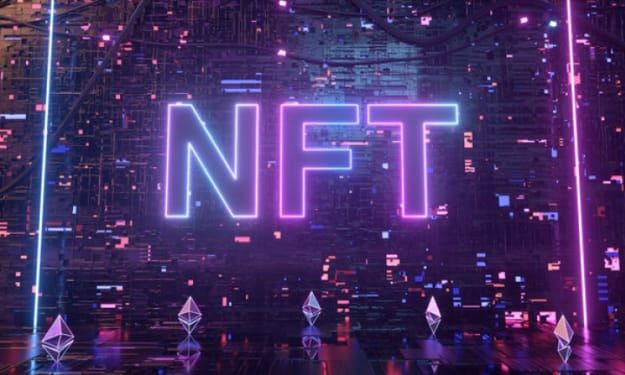Strategies for NFT Marketplace Development
NFT Marketplace Development

In recent years, Non-Fungible Tokenshave revolutionized the digital world by offering unique digital assets that can be bought, sold, and owned on blockchain networks. NFTs have gained immense popularity, with artists, musicians, gamers, and even businesses exploring the opportunities they present. If you're interested in venturing into the NFT marketplace development, this article will guide you through the essential strategies to succeed in this fast-evolving industry.
Introduction to NFTs
NFTs are unique digital assets represented by blockchain technology, which certifies their authenticity and ownership. Unlike cryptocurrencies, NFTs cannot be exchanged on a one-to-one basis due to their uniqueness. This inherent scarcity makes them highly valuable and desirable among collectors and enthusiasts.
Understanding NFT Marketplace Development
NFT marketplace development involves the creation of a platform that enables users to mint, buy, sell, and trade NFTs. These marketplaces act as intermediaries, facilitating the seamless exchange of digital assets between creators and buyers. As an NFT marketplace developer, it is crucial to grasp the underlying technology and principles governing NFTs to provide a secure and user-friendly ecosystem for participants.
Identifying Market Demand and Target Audience
Before diving headfirst into NFT marketplace development, conducting thorough market research is paramount. Identifying market demand and understanding the preferences of the target audience will help tailor the platform to meet the specific needs and desires of users. Analyze existing NFT market trends, popular digital art categories, and the interests of potential collectors to create a marketplace that stands out from the competition.
Selecting the Right Blockchain Platform
The choice of blockchain platform lays the foundation for your NFT marketplace. Ethereum has been the go-to platform for NFT development, thanks to its robust smart contract capabilities and established network effects. However, emerging blockchain networks like Binance Smart Chain, Flow, and Tezos offer viable alternatives, each with its unique features and benefits. Assess the scalability, transaction costs, and user base of different blockchain platforms before making a decision.
Creating a User-Friendly Interface
A user-friendly interface is the key to attracting and retaining users on your NFT marketplace. Design an intuitive and visually appealing interface that provides a seamless browsing and buying experience. Consider implementing a straightforward onboarding process for creators and collectors, and ensure the platform is responsive and optimized for various devices.
Smart Contract Development and Security
At the core of any NFT marketplace are smart contracts that govern the creation, ownership, and transfer of NFTs. Collaborate with experienced blockchain developers to create robust and secure smart contracts that prevent fraud, hacking, and unauthorized access. Conduct comprehensive security audits to identify and address potential vulnerabilities before deploying the marketplace.
Emphasizing Art and Content Curation
The success of an NFT marketplace heavily depends on the quality and uniqueness of the digital assets it hosts. Emphasize the curation of high-quality art, collectibles, and digital content to attract both established and up-and-coming artists. Engage with creators and collaborate with renowned art institutions to offer exclusive and sought-after collections, enhancing the reputation of your platform.
Implementing Payment Gateways and Wallet Integration
Seamless and secure transactions are fundamental to a successful NFT marketplace. Integrate multiple payment gateways to accommodate various cryptocurrencies and payment methods, ensuring convenience for users worldwide. Additionally, provide wallet integration to enable users to manage their NFT assets efficiently and securely within the platform.
Providing Scalability and High Performance
As interest in NFTs continues to surge, your marketplace must be prepared to handle increased traffic and activity. Scalability and high performance are crucial to preventing downtime and providing a smooth user experience. Employ solutions like layer-2 scaling or explore blockchain networks with better scalability to accommodate growing user demand.
Offering Community and Social Features
Create a sense of community within your NFT marketplace to foster engagement and interaction among users. Implement social features like forums, comments, and user profiles, allowing creators and collectors to connect, share insights, and collaborate. Building a vibrant community can lead to increased user loyalty and word-of-mouth promotion.
Effective Marketing and Promotion Strategies
Launching an NFT marketplace is just the first step; effective marketing is essential to attract users and drive adoption. Craft a comprehensive marketing plan that includes social media campaigns, content marketing, and search engine optimization. Engage with influencers and thought leaders in the NFT space to amplify your platform's visibility and reach a broader audience.
Leveraging Influencers and Partnerships
Partnering with influencers, artists, and established brands can significantly impact the success of your NFT marketplace. Collaborate with well-known figures in the art, gaming, or entertainment industry to showcase their exclusive NFT collections on your platform. Influencers' endorsements can generate excitement and trust, attracting a larger user base.
Staying Compliant with Legal and Regulatory Frameworks
Navigating the legal landscape is crucial to ensure the long-term viability of your NFT marketplace. Seek legal counsel to understand the regulatory requirements and compliance obligations related to NFT trading, copyright issues, and intellectual property rights. Staying on the right side of the law is essential for gaining the trust of creators and collectors.
Monitoring and Analytics for Continuous Improvement
Constantly monitoring user behavior and marketplace performance is essential for identifying areas of improvement. Utilize analytics tools to gather data on user engagement, popular collections, and transaction patterns. Data-driven insights will enable you to refine your platform's features and optimize user experience for better retention and growth.
Conclusion
The NFT marketplace presents an exciting and dynamic landscape, brimming with opportunities for creators, collectors, and entrepreneurs alike. By following these strategies and staying adaptable to the ever-evolving NFT space, you can create a successful and sustainable NFT marketplace that resonates with the growing community of NFT enthusiasts.
About the Creator
Enjoyed the story? Support the Creator.
Subscribe for free to receive all their stories in your feed. You could also pledge your support or give them a one-off tip, letting them know you appreciate their work.





Comments
There are no comments for this story
Be the first to respond and start the conversation.